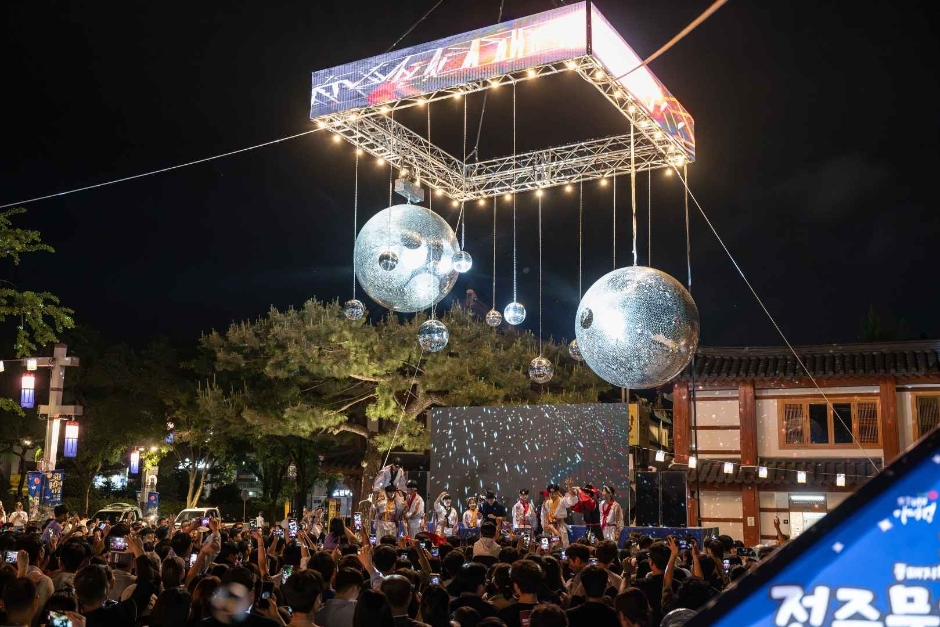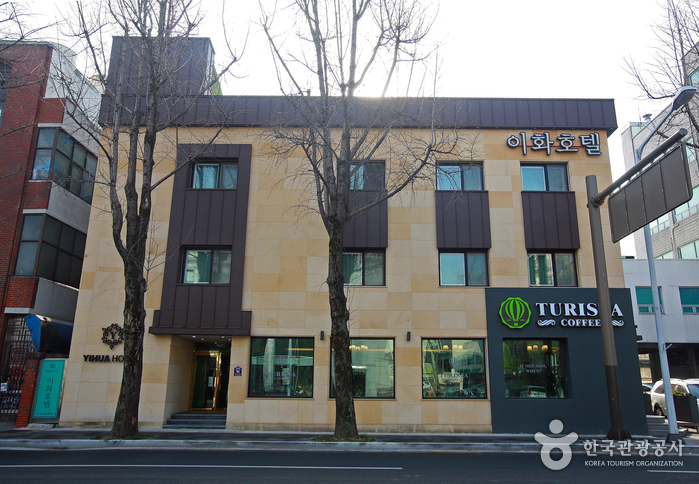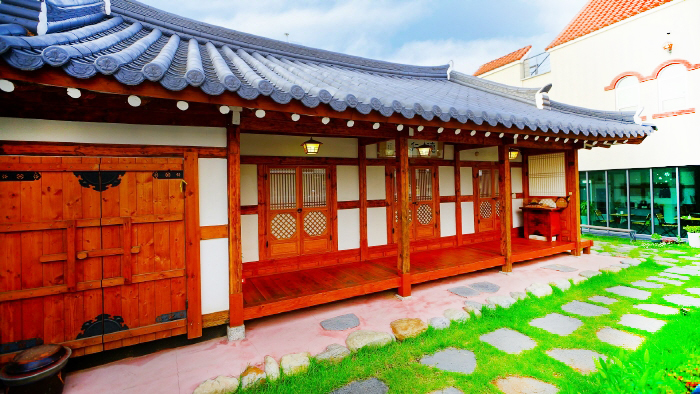Dan Kyung [Korea Quality] / 단경 [한국관광 품질인증]
320.806497276637m 230 2024-04-07
99, Hanji-gil, Wansan-gu, Jeonju-si, Jeonbuk-do
+82-10-5304-4380
Beginning of brightness that is what Hanok Guesthouse Dankyung means. The name reflects the politeness and consideration of the people of Jeonju. It also carries the wish for the guests of the guesthouse to become polite and considerate as well.
Since it was built in June 1943, Dankyung has kept its original form intact through the turbulent period of Korea's liberation from Japanese colonization, Korean War, and modernization. Despite the traditional form, the approximately 70-year-old Hanok is convenient to use and is beautiful in shape, emitting its beauty and gracefulness to the visitors of Jeonju Hanok Village. Anyone staying in Dankyung will feel as if he/she has become a noble man/woman of old Korea.
The white birch garden at the entrance, maple tree, and apricot flower tree in the yard create a seasonal atmosphere. Dansil, Hyangsil, and Gyeongsil of the main building and Byeolsil and Dasil of the separate building are equipped with a wooden floor, giving off a delicate wood scent. The gallery opposite the garden displays artworks and provides a space for guests to have breakfast or drink coffee or tea. The rooftop of the gallery is a special place for guests so that they can enjoy an uninterrupted view of Jeonju Hanok Village over drinks.
Bukyungdang [Korea Quality] / 부경당 [한국관광 품질인증]
328.47330629491125m 225 2024-04-07
99-5, Hanji-gil, Wansan-gu, Jeonju-si, Jeonbuk-do
+82-10-5327-8736
Located at the heart of the Jeongju Hanok Village, Bugyeongdang is a beautiful traditional 60-year old Hanok.
Traditional floor, roof tiles, and jar stands next to stone walls, while small garden and flower beds reflect the architect couple's attentive hands. As a Hanok with one of the prettiest gardens in Jeonju Hanok Village, it is a good place to appreciate the garden flowers and enjoy the unique laid-back atmosphere of Hanok while sitting on the floor. The place is close to major tourist attractions including Imokdae, Gyeonggijeon, Jeondong Catholic Cathedral, and Hyanggyo.
The owner, who was born and raised in the Jeonju Hanok Village, describes must-go sites like a tour guide and introduces undiscovered great restaurants or things-to-do to the guests. As the owner, who had long been engaged in architecture, takes care of the Hanok, the building always stays clean and in good condition.
In the shared kitchenette, guests can prepare simple breakfast for themselves with the dishes and cups made by the wife of the owner herself. Luggage storage services before check-in and after check-out, and description of tourist attractions are provided.
Paseo Cultural Nocturno de Jeonju (전주문화유산야행)
362.82790691204946m 38547 2024-04-17
Taejo-ro 44, Wansan-gu, Jeonju-si, Jeonbuk-do.
063-232-9937
Este tour se dedica a la preservación y puesta en valor del patrimonio cultural coreano. Jeonju es una ciudad que alberga gran cantidad de sitios que son patrimonio histórico de la época de Joseon. Durante las noches que dura el tour, los visitantes pueden experimentar y conocer de cerca la historia de Corea y apreciar su legado ancestral.
Yihua Hotel
368.8454328931112m 1229 2024-04-07
76, Jeollagamyeong-ro, Wansan-gu, Jeonju-si, Jeonbuk-do
+82-63-284-6699
As a three-story building with a basement floor, Jeonju Yihua Hotel is located in Jeon-dong in the eastern part of Jeonju Hanok Village. It's a medium-sized hotel with 26 Suite, Standard Double, Standard Korean-style, and Deluxe Twin rooms. The room rates are reasonable for both tourists and business travelers. The front desk lobby is on the 1st floor, and the rooms are on the 2nd and 3rd floors. Facing the front desk are a computer with Internet connection and a printer as well as a microwave oven. The 1st floor of the hotel is rented to a cafe named "Turista," which is popular for its brunch. Many guests staying at Yihua Hotel have brunch here before taking a tour of Jeonju. Nearby tourist destinations include Gyeonggijeon Shrine, Jeondong Catholic Cathedral, Jeonju Hanok Village, JIFF (Jeonju International Film Festival) Street, and Pungpae Jigwan (Jeonju Inn). The Gyeonggijeon Shrine, Jeonju JIFF Street, and Pungnammun Gate are 3 minutes, 5 minutes, and 3 minutes away from the hotel on foot, making it a popular place to stay among Korean and foreign tourists.
Blueboat guest house Jeonju [Korea Quality] / 블루보트게스트하우스 전주점 [한국관광 품질인증]
370.3517950905264m 764 2024-04-07
2nd floor, 75, Chunggyeong-ro, Wansan-gu, Jeonju-si, Jeonbuk-do
+82-10-6545-9049
'Blueboat Hostel Jeonju is one of guesthouses of the 'The Guest House' chain in Busan, Seoul, and Gyeongju. Blueboat Hostel Jeonju opened in April 2016 in Gyeongwon-dong, Jeonju-si, which is only 10 minutes away from Gyeonggijeon Shrine on foot. A number of other popular tourist destinations including Jeonju Hanok Village, Jeongdong Cathedral, and Nammun Market are also within walking distance. The hostel has seven guestrooms furnished with steel frame beds. The bathrooms and kitchen are shared among the guests, and there is a television in the kitchen. The rooms have a trendy interior design because it's mostly visited by young tourists. The guesthouse is just like one of those you can find in other countries, except cleaner.
Jeonggahanog [Korea Quality] / 정가한옥 [한국관광 품질인증]
384.7093734843343m 176 2024-04-07
78-3, Girin-daero, Wansan-gu, Jeonju-si, Jeonbuk-do
+82-10-9934-1300
Jeongga Hanok is a space where the traditional beauty of hanok and the modern comfort co-exists. The newly built Hanok is neat and pleasant. When you enter the small cobbled yard, the porch and the eaves will welcome you, and you’ll find that the rooms are filled with delicate wood fragrance. The interior is furnished with Korean cypress trees and red clay. In particular, the Cypress Tree room is all made of cypress trees, from the walls to the ceiling, making guests feel like they are lying in a forest. Maple Room and Ginkgo Tree Room, meanwhile, have attics.
Jeongga Hanok faces Jeonju Hanok Village with the Girin-daero in the middle. Hanok Village is just across the road. Major attractions such as Gyeonggijeon, Jeondong Catholic Cathedral, and Jeonjuhyanggyo Confucian School are all within walkable distance. Omokdae, which offers an unhindered view of Hanok Village, is located over the pedestrian overpass. Jaman Mural Village, famous for colorful mural and cozy cafes, is about 300 meters away and a great spot for selfie lovers.
Deokindang
413.08202296476475m 942 2024-04-07
28-3, Pungnammun 3-gil, Wansan-gu, Jeonju-si, Jeonbuk-do
063-282-6336, 010-5654-3554
Deokindang is located across from the west street of Jeonju Hanok Village. The guesthouse is surrounded by low walls, inside of which there are grass yard, stone pavement, and four traditional houses with three guestrooms, which are called the Large Room, Small Room, and Kitchen Room. Here, the "Kitchen Room” is not actually a kitchen, but a kitchen turned into a bedroom. The Large Room in the center of the main building can accommodate up to 8 people, making it a perfect place to stay for a large family. It’s furnished with thin, white calico sheets, which are very soft to the touch.
Situated on the outskirts of Jeonju Hanok Village and yet very close to Gyeonggijeon Shrine, Jeondong Catholic Cathedral, Nambu Market, and Jeonju Pungpae Jigwan (Jeongju Gaeksa. Treasure No. 583), the guesthouse is quiet and conveniently located as well for those taking a tour of Jeonju. The owner of Deokindang also owns another guesthouse called Su House, so the guests of Deokindang can have access to the Community Room of Su House.
The Hanok [Korea Quality] / 더 한옥 [한국관광 품질인증]
429.2484734378591m 875 2024-04-07
68-15, Eunhaeng-ro, Wansan-gu, Jeonju-si, Jeonbuk-do
+82-10-2189-4002
The Hanok was transformed into a new style of hanok by combining the traditional structure (built in 1975) with a modern hanok style. Located in Jeonju Hanok Village, this large hanok is composed of a ‘ㄱ’-shaped bonchae (main building, 7-kan*), a sarangchae (men’s quarters, 3-kan), a large courtyard, and a platform for crocks of sauces and condiments. The house accepts only a limited number of people so that guests can enjoy a relaxing stay amid a pleasant, spacious environment.
Each room is built with “well-being” construction materials such as Hinoki cypress wood, red clay, and hanji (traditional Korean paper handmade from the mulberry tree). As for the four rooms of the anchae (women’s quarters), ‘Gwibin’, the largest room, is suitable for two families. It is heated with the ondol system (Korean floor heating system), and has a body massager and two king-sized beds. ‘Eoulim’ has an attic and a high ceiling with exposed rafters and crossbeams. Both rooms are equipped with two bathrooms.
The ‘ㅡ’-shaped sarangchae opposite the courtyard has three guestrooms. In particular, ‘Byeolhana’ has a red clay bed with ondol heating; while ‘Byeolset’ features a bunkbed made of wooden materials originally used in the construction of the house.
The Hanok provides a ‘Moonlight tea meeting’ where guests can enjoy tea and conversation under the moonlight in the large courtyard.
*kan - a unit of measurement referring to the distance between two columns.
Damun (다문)
451.22458416782416m 8127 2024-04-07
74-8, Eunhaeng-ro, Wansan-gu, Jeonju-si, Jeonbuk-do
+82-63-288-8607
Situated in Jeonju Hanok Village, Gyo-dong, Jeonju-si, Damun serves Korean table d’hote in a restaurant divided into large and small rooms within a hanok building structure.
Omokdae e Imokdae (오목대와 이목대)
457.9243494602178m 30826 2024-04-07
Girin-daero 55, Wansan-gu, Jeonju-si, Jeonbuk-do.
Omokdae está situado en la cima de una colina y se trata de uno de los lugares donde Yi Seong-gye (quien se convirtiera más tarde en el rey Taejo, el primero de la dinastía Joseon) hizo una parada para celebrar su victoria de camino a casa tras la guerra contra los invasores japoneses, al final de la era Goryeo. Enfrente de Omokdae está Imokdae, situado cerca de los pies del monte Seungamsan, donde se encuentra Chimyeongjasan, un monumento católico. En este lugar, Mokjo (antepasado del rey Taejo) solía jugar con sus amigos a representar guerras de niño, una acción muy simple que aparecería después en 'Yongbieocheonga', una balada del siglo XV que narra los logros culturales de la nación.
![Dan Kyung [Korea Quality] / 단경 [한국관광 품질인증]](http://tong.visitkorea.or.kr/cms/resource/65/2593265_image2_1.jpg)
![Bukyungdang [Korea Quality] / 부경당 [한국관광 품질인증]](http://tong.visitkorea.or.kr/cms/resource/29/2593529_image2_1.jpg)


![Jeonggahanog [Korea Quality] / 정가한옥 [한국관광 품질인증]](http://tong.visitkorea.or.kr/cms/resource/62/2594362_image2_1.jpg)

![The Hanok [Korea Quality] / 더 한옥 [한국관광 품질인증]](http://tong.visitkorea.or.kr/cms/resource/68/2556468_image2_1.jpg)


 Español
Español
 한국어
한국어 English
English 日本語
日本語 中文(简体)
中文(简体) Deutsch
Deutsch Français
Français Русский
Русский